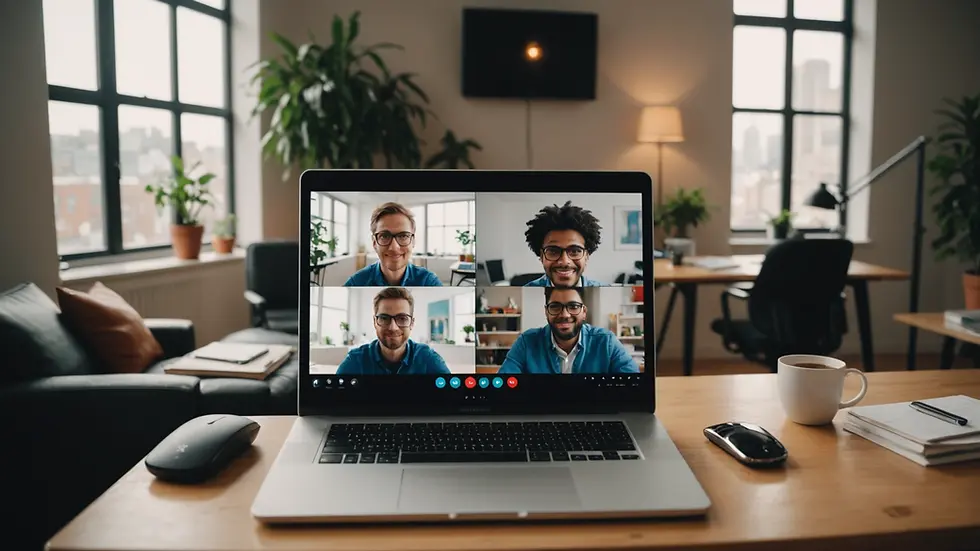How My Background as a Web Developer and Graphic Designer Influences My Approach to Website Design and Development
- Christopher Fleming
- Jan 27
- 4 min read
Moving to Atlanta reignited my enthusiasm for graphic design and web development. As I explored new techniques in email marketing, I was pleasantly surprised to receive a client referral from an unexpected source. This experience reminded me that creativity often yields rewarding connections. I knew that working Counsul Design would be a life-changing experience.
Designing a website transcends being a mere task for me; it is a complete experience. I ask myself crucial questions: Who am I serving, and why does it matter? How does my background shape my relationships with clients? I reflect on what works, what doesn't, and what message I want my designs to convey. Importantly, I consider if the client already has a website and how it stacks up in today’s competitive landscape.

While pondering these questions, I often return to the drawing board. My experience as a tattoo artist emphasized the importance of manual sketches. I frequently start my design projects with pen and paper, which allows me to express the mood and essence of the design quickly, ensuring it aligns with the intended message.
The psychology of art—especially color and proportion—greatly impacts web design. When utilized effectively, these design elements enhance a site's visual appeal and can increase client engagement. Research indicates that a well-designed website can boost conversion rates by 200% or more. Unlike competitors who merely create basic content, my goal is to leave a lasting impression on visitors.
Design
Design is at the heart of every website I create. It is where my artistic skills blend seamlessly with functional requirements. Each project starts with a thorough understanding of the client's vision. For example, when working with a local bakery, I ensured the website reflected their brand's warmth and community spirit, integrating cozy colors and inviting imagery that resonated with customers. At Counsul Design, we pay attention to the small details that make a big difference overall.

Proportion
Proportion significantly impacts a website's usability. Achieving balance among design elements helps prevent overwhelming visitors. For instance, during a project for an online art gallery, I ensured that images were proportionate to the text, guiding users intuitively from one section to another.

Color Scheme
Choosing the right color scheme goes beyond visual appeal; it evokes emotions and reinforces brand identity. Understanding color psychology is essential in this process. For example, using blue hues can inspire trust, making it ideal for financial service websites. In contrast, vibrant yellows can convey excitement and optimism, perfect for a children’s toy store.
Font Selection
Fonts are a powerful communication tool. They not only enhance readability but also shape the overall feel of the website. I select fonts that align with the brand's personality and improve user experience. A study found that 95% of people stated that readability was their top concern. Therefore, I often recommend sans-serif fonts for modern sites, boosting legibility across devices.
Website Layout
With the design elements in place, I shift my focus to the website's layout. It should be clean and easy to navigate, effectively showcasing the content while guiding the user. For instance, while designing an e-commerce site, I prioritize a layout that highlights popular products and ensures users can easily access categories, leading to a better shopping experience.
Functionality
Once the design is finalized, the development stage begins. Research shows that 47% of users expect a webpage to load in under two seconds, and 40% will abandon a site that takes longer than three seconds. I prioritize rapid load times to capture users’ attention quickly. If a website is fast and functional, studies indicate it can improve user retention by up to 75%. I actively seek out glitches and delays to remedy them before launch, ensuring users have a pleasant browsing experience.

Review
After development, I move to the review phase. This stage involves meticulous testing across various devices and browsers, which is crucial for ensuring a consistent experience. Failures to adapt across platforms can result in losing potential clients. Thorough testing allows me to catch issues and make necessary adjustments.
Launch
Finally, once everything is confirmed to work smoothly, the site goes live. There’s something electrifying about a website's launch—a culmination of creative energy, technical skill, and strategic planning. My experiences as both a tattoo artist and graphic designer fuel this process, allowing me to deliver unique websites.
Stay tuned for a look at innovative marketing techniques! My journey doesn’t end here. I’m eager to share actionable insights on how design and development can drive success in the digital landscape.
In conclusion, my journey in graphic design and web development reflects my artistic roots. Each project embodies the importance of thoughtful design, where every element—color, proportion, typography, and layout—serves a significant purpose. By integrating these aspects with effective development, I aim to create impactful websites that resonate with users and generate tangible results. I look forward to making an impact in Atlanta and beyond.



Comments